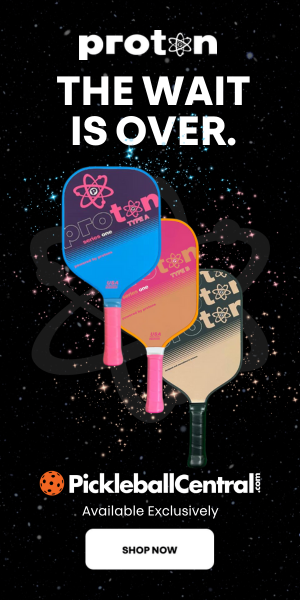3 Pickleball Paddles for Control (And What that Really Means)
Last Edited
Aug 23 2024
Category
Gear
You’ve probably seen the term “control” anywhere you’ve ever shopped for pickleball paddles.
Control paddles represent an entire category these days…which is great for manufacturers, since it’s the type of industry jargon that sounds easy to market. Doesn’t everybody want a “control-focused” paddle to some extent?
This is the type of term that you may feel you understand through how it's used in context.
But there’s much more of a technical meaning behind what makes a control paddle that you should understand if you want to choose one that truly matches your play style.
Here’s what you need to know about control pickleball paddles:
Who They’re Made For
"Control paddles are purposefully designed for players who prefer to use finesse rather than sheer power on the pickleball court,” says Rob Barnes, co-founder and co-CEO of Selkirk Sport.
“Control paddles typically feature a thicker core, a lighter weight, materials such as graphite and carbon, and a shorter, wider paddle face to enhance the sweet spot."
Control paddles are typically engineered for players who like to control the pace of the ball. Example: a slowdown volley or a soft dink reset at the kitchen line.
This is where “soft hands” come into play. If you’re a player who resists the urge to smash the ball every time, you’ll probably want to consider a control paddle.
Likewise, if you’re an athletic player who’s already capable of generating plenty of power and spin, a control paddle may help balance your game.
But don’t think your decision should end there…
The Limits of “Control”
Every paddle has its limits. One important thing to remember is that a truly great paddle should balance certain aspects to cover for the weak points of its design.
In the case of control paddles, power is the thing you’ll need to provide.
If you need a little help in the power department but still want a control-focused paddle, look for these qualities:
- A midweight design (between 7.3 and 8.3 oz), which tends to balance the two opposing qualities of power and control
- A carbon fiber paddle face
- A longer handle, which makes it easier to add a second hand to your backhand (and increase the amount of potential power you can add to this shot)
If you’re a high-level player looking to compete, you may consider pursuing more of a power paddle for the simple reason that other competitors are likely using them. Read more on power paddles here.
High level players are able to control the ball in a fundamentally different way than those of lower levels, so at a certain point, the advantage comes from power added.














